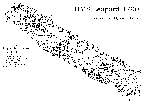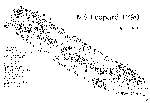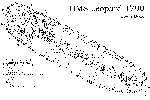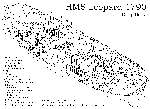This page contains some information about the original HMS Leopard.
4th rate of 50 guns
|
Although for most navy a thing of the past, too small to stand in the line of battle, but lacking the speed of the frigate, the Royal Navy continued ordering 50 gun ships also during the Napoleonic wars. During the American Revolutionary War, the Royal Navy was in need of ships with fairly heavy batteries to bear upon coastal targets and a certain troopcarrying capacity. A task, for which frigates would be too small and only the 50 gun ship was able to operate in the shallow waters of the North American coasts. Therefore as a ship of the Portland class (Williams design 1767) the Leopard was ordered in 1775, partly built in Portsmouth Dyd in 1776 and then stopped. Then the frames remained rotting in the open for some years. In 1785 the frames where taken to Sherness Dyd, and the work continued. In 1790 HMS Leopard was finally being launched. |
|
|
The Leopard is known in history for her assault on the USS Chesapeake in 1807. Follow the link for some information. |
|
|
One of her most famous commanders was Peter Heywood, known from the mutiny of the Bounty. He was in command of her commanded her from 1803 to 1805. In this time he carried out a survey of the shoals off the north-east coast of Ceylon and between them and Point Calymere. He also ascertained the exact position of most places on the coast of India. Information about his life can be found here. |
|
|
In 1810 the Leopard was fitted as a troopship. The main battery was taken out and the rigging was that of a 28 guns frigate. HMS Leopard was wrecked in fog at the north coast of Anticosti Island in the Saint Lawrence River on June 28th, 1814. |
|
|
Following some illustrations of the decks of the Leopard, showing you, who and what is placed where. (Illustrations taken from Rif Winfield's Book "The 50 gun ship") |
|
 |
Forecastle and Quarter Deck |
 |
Upper Deck |
 |
Lower Deck |
 |
Orlop Deck |